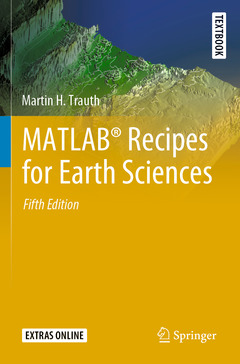MATLAB® Recipes for Earth Sciences (5th Ed., 5th ed. 2021) Springer Textbooks in Earth Sciences, Geography and Environment Series
Auteur : Trauth Martin H.

MATLAB® is used in a wide range of geoscientific applications, e.g. for image processing in remote sensing, for creating and processing digital elevation models, and for analyzing time series. This book introduces readers to MATLAB-based data analysis methods used in the geosciences, including basic statistics for univariate, bivariate and multivariate datasets, time-series analysis, signal processing, the analysis of spatial and directional data, and image analysis. The revised and updated Fifth Edition includes seven new sections, and the majority of the chapters have been rewritten and significantly expanded. New sections include error analysis, the problem of classical linear regression of log-transformed data, aligning stratigraphic sequences, the Normalized Difference Vegetation Index, Aitchison?s log-ratio transformation, graphical representation of spherical data, and statistics of spherical data. The book also includes numerous examples demonstrating how MATLAB can be used on datasets from the earth sciences. The supplementary electronic material (available online through SpringerLink) contains recipes that include all the MATLAB commands featured in the book and the sample data.
Date de parution : 12-2021
Ouvrage de 517 p.
15.5x23.5 cm
Date de parution : 12-2020
Ouvrage de 517 p.
15.5x23.5 cm
Thème de MATLAB® Recipes for Earth Sciences :
Mots-clés :
MATLAB; Quantitative Geology; Geostatistics; Time-Series Analysis; Signal Processing; Spatial Data
